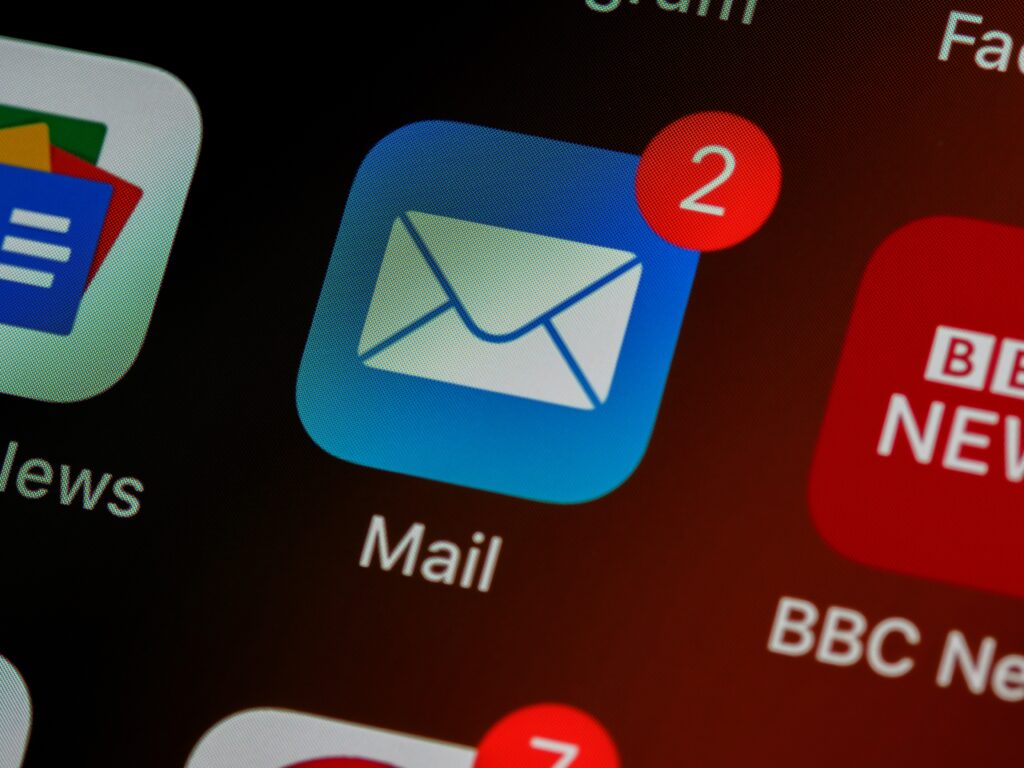
In “What Is Email Marketing? A Brief Overview”, you will find a series of articles that are specifically designed to provide startups and small businesses with essential information about various digital marketing topics. This collection of articles offers a concise description of what email marketing entails and demonstrates how it can be effectively utilized by the target audience to establish, expand, and advance their enterprises. By exploring the ins and outs of email marketing, you will gain valuable insights into its potential benefits and learn how to harness this powerful tool to nurture customer relationships, enhance brand awareness, and ultimately drive business growth.

What Is Email Marketing?
Email marketing is a powerful digital marketing strategy that involves sending commercial messages to a group of people using email. It is one of the most effective ways to reach and engage with your target audience, build customer relationships, increase brand awareness, and drive sales and conversions. With email marketing, you have the opportunity to deliver personalized and targeted messages directly to your subscribers’ inboxes.
Definition of Email Marketing
Email marketing is the practice of sending commercial messages, typically in the form of emails, to a group of people. These messages could be promotional offers, newsletters, transactional updates, or other types of communication that aim to inform, engage, or persuade the recipients. It is an essential component of digital marketing strategies for businesses of all sizes.
Importance of Email Marketing
Email marketing plays a crucial role in building and maintaining customer relationships, increasing brand awareness, driving sales and conversions, and boosting customer engagement. It offers several benefits that make it an invaluable tool for businesses.
Benefits of Email Marketing
Cost-Effectiveness
Email marketing is cost-effective, making it a preferred choice for businesses with limited marketing budgets. Unlike traditional marketing methods, such as print or TV ads, email marketing allows you to reach a large audience at a fraction of the cost.
Targeted and Personalized Communication
One of the major advantages of email marketing is its ability to deliver targeted and personalized communication. By segmenting your email list based on various criteria, such as demographics or purchase history, you can tailor your messages to specific groups, increasing relevancy and engagement.
Measurable Results
With email marketing, you can easily track and measure the performance of your campaigns. You can monitor metrics like open rates, click-through rates, conversion rates, and revenue generated, providing valuable insights that can help you optimize your campaigns for better results.
Easy Automation
Email marketing automation allows you to streamline and automate various aspects of your campaigns. You can set up automated email sequences, triggered by specific actions or events, delivering the right message at the right time. Automation saves time and ensures consistent communication with your subscribers.
High Return on Investment (ROI)
Email marketing consistently yields a high return on investment (ROI). With its low cost and potential for generating significant revenue, email marketing is an incredibly profitable strategy for businesses. The ability to target specific segments, personalize messages, and track results further enhances its ROI.
Types of Email Marketing
There are various types of email marketing campaigns that serve different purposes and objectives. Here are some common types:
Promotional Emails
Promotional emails are designed to showcase and promote your products, services, or special offers. These emails often include discounts, promotions, or exclusive deals to encourage recipients to make a purchase.
Transactional Emails
Transactional emails are email communications triggered by specific interactions or transactions between a customer and your business. Examples include order confirmations, shipping notifications, and password resets. These emails serve to provide important information and enhance customer experience.
Welcome Emails
Welcome emails are the first messages sent to new subscribers who have just joined your email list. They serve as an introduction to your brand and set the tone for future communication. Welcome emails are an opportunity to make a positive first impression and nurture a new relationship.
Newsletter Emails
Newsletter emails are a popular way to keep subscribers informed about your latest news, updates, and content. They often include a collection of articles, blog posts, or curated content that provides value to your subscribers and keeps them engaged with your brand.
Abandoned Cart Emails
Abandoned cart emails are sent when a customer adds items to their shopping cart but leaves the website without completing the purchase. These emails serve as a gentle reminder and can include incentives or discounts to encourage the customer to return and complete the purchase.
Components of an Email Marketing Campaign
To create a successful email marketing campaign, there are several key components you should consider:
Email List Building
Building a quality email list is essential for effective email marketing. You can grow your list by capturing email addresses through website sign-up forms, lead magnets, social media promotions, or in-store sign-ups. It is important to ensure your subscribers have explicitly opted in to receive your emails to comply with anti-spam regulations.
Email Design and Layout
The design and layout of your emails are critical for capturing attention and driving engagement. Well-designed emails with clean and visually appealing layouts, including images, branding elements, and clear calls-to-action, can significantly increase click-through rates and conversions.
Subject Lines and Preheaders
The subject line and preheader are the first things recipients see when your email lands in their inbox. Crafting compelling and attention-grabbing subject lines can improve open rates and encourage recipients to click through. Preheaders provide additional context and should complement the subject line to further entice recipients to open your email.
Email Content and Copywriting
The content of your emails should be informative, engaging, and relevant to your subscribers’ interests. Whether you are sharing educational content, product updates, or promotional offers, a well-written and persuasive copy can drive conversions and keep subscribers interested.
Call-to-Action (CTA)
Every email should include a clear and compelling call-to-action (CTA). Whether it is encouraging subscribers to make a purchase, sign up for an event, or visit your website, a strong CTA can drive the desired action and increase conversions.
Email Automation and Autoresponders
Email automation allows you to set up automated email sequences that are triggered by specific actions or events. Autoresponders can welcome new subscribers, nurture leads, deliver personalized content, or follow up with customers after a purchase. Automation saves time and ensures timely and consistent communication.
Email Analytics and Tracking
Measuring the performance of your email marketing campaigns is crucial for optimizing your strategy. Email analytics and tracking tools provide valuable insights into open rates, click-through rates, conversions, and subscriber engagement. By analyzing these metrics, you can make data-driven decisions to improve your campaigns and achieve better results.

Explanation of Email Marketing
At its core, email marketing involves sending commercial messages using email to promote products or services. It is a strategic approach to communicate with your target audience and nurture leads by providing valuable content and offers. Email marketing allows you to directly reach a specific audience segment and build relationships based on trust and relevance.
Purpose of Email Marketing
The purpose of email marketing extends beyond simply promoting products or services. It serves as a powerful tool for strengthening customer relationships, driving customer engagement, generating repeat business, increasing website traffic, and educating and informing subscribers.
Examples of Email Marketing
Here are a few examples of how businesses can effectively use email marketing:
Sending a Weekly Newsletter
A company can send a weekly or monthly newsletter to its subscribers, providing updates on industry news, new product releases, or helpful tips and advice. Newsletters are a great way to stay top of mind with your audience and showcase your expertise.
Offering Exclusive Discounts and Promotions
Businesses can send emails announcing exclusive discounts or promotions to their subscribers. This creates a sense of exclusivity and encourages recipients to take advantage of the offer, leading to increased sales and conversions.
Sharing Educational Blog Posts
Emails can be used to share educational blog posts or other valuable content with subscribers. This helps establish your brand as a trusted source of information and keeps subscribers engaged with your content.
Birthday or Anniversary Emails
Sending personalized birthday or anniversary emails to subscribers shows that you value and appreciate their loyalty. These emails can include special discounts or personalized offers, making the recipient feel special and increasing brand loyalty.
Abandoned Cart Reminders
When a customer abandons their shopping cart, businesses can use email marketing as a way to remind them to complete their purchase. These emails can include incentives or personalized recommendations to bring the customer back and close the sale.

Email Analytics and Tracking
Email analytics and tracking are crucial components of email marketing. By monitoring open rates, click-through rates, conversion rates, and revenue generated, businesses can gain valuable insights into the performance of their email campaigns.
Monitoring Open Rates and Click-Through Rates
Open rates indicate the percentage of recipients who opened your email, while click-through rates measure the percentage of recipients who clicked on a link within your email. Monitoring these metrics allows you to understand the effectiveness of your subject lines, email content, and design.
Tracking Conversion Rates and Revenue Generated
Conversion rates measure the percentage of recipients who took the desired action after clicking through your email. Whether it’s making a purchase, signing up for a webinar, or filling out a form, tracking conversion rates gives you insights into the success of your email campaigns in driving desired actions and generating revenue.
Analyzing Subscriber Engagement and Behavior
Email marketing platforms provide data on subscriber engagement, including how often they open your emails, which links they click on, and their overall interaction with your emails. Analyzing this data helps you understand your audience’s preferences and tailor future campaigns to their needs.
Using A/B Testing for Email Optimization
A/B testing involves sending two versions of an email to a small sample of your subscribers and analyzing which version performs better. This allows you to test different subject lines, layouts, calls-to-action, or email content to optimize your campaigns for maximum effectiveness.
In conclusion, email marketing is a valuable tool that businesses of all sizes can use to build and nurture customer relationships, increase brand awareness, drive sales and conversions, and boost customer engagement. With its cost-effectiveness, targeted communication, measurable results, easy automation, and high return on investment, email marketing remains a key strategy in the digital marketing landscape. By understanding the different types of email marketing campaigns and utilizing the essential components, businesses can create successful campaigns that resonate with their audience and drive desired actions.
